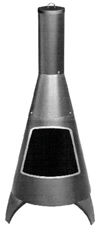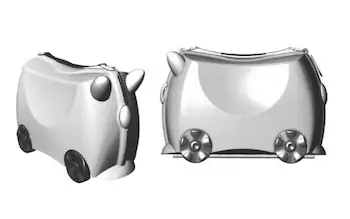Design rights are very important, and if you operate in creative industries, you would be aware of the rights they provide. Within the European Union (EU), the regulatory framework for design rights provides clarity on what constitutes protectable designs and sets boundaries for fair competition. In this blog, we discuss two important cases involving design right infringement – La Hacienda Limited v Gardeco Limited and Magmatic Limited v PMS International Limited. Both these cases highlight the key aspects of design law, including novelty, distinctiveness, and the interpretation of the “overall impression” test.
Read – Differences between registered and unregistered designs in the UK
The relevant EU law
Article 9 of Directive 98/71/EC of the European Parliament dictates the legal protection of designs. This European Union directive defined the legal framework for design rights, including the scope of protection, which is centred around whether a new design creates a different overall impression on an informed user compared to an existing one.
“The scope of the protection conferred by a design right shall include any design which does not produce on the informed user a different overall impression.”
The key phrase here is “different overall impression” on an informed user. The two cases which have been critical in assessment for design rights are discussed as follows.
What is an informed user? The 'informed user' is a legal concept used to evaluate a design's 'individual character'. This user is typically an end user with more than average attention to design details, possessing either personal experience or extensive sector knowledge, and their identity varies based on the product involved.
1. La Hacienda Limited v Gardeco Limited
Gardeco Limited obtained a registered design in the UK for a conical steel chimenea featuring a stainless steel rim around its opening. However, La Hacienda Limited challenged the validity of this design under Section 1B(1) of the Registered Designs Act 1949.
This section outlines the requirement for designs to be both new and possess individual character when compared to prior designs that have been publicly disclosed. The invalidation claim was based on an earlier registered design held by La Hacienda, asserting that Gardeco’s design lacked the necessary novelty and distinctiveness.

|

|
| Figure 1: Gardeco Limited UK Registered Design | Figure 2: La Hacienda Limited earlier Registered Design |
The Registrar concluded that while the two designs had similarities, the differences, particularly in the mouth shape and design details, were enough to create a different overall impression. As a result, the invalidation claim was rejected, and Gardeco’s design was upheld as valid.
Bailii Link – Gardeco Limited v La Hacienda Limited (Design) [2012] UKIntelP o45612 (20 November 2012)
2. Magmatic Limited v PMS International Limited
Magmatic Limited v PMS International Limited was a significant case in the field of design right infringement. The dispute centred around the design of children’s ride-on suitcases. Magmatic, the maker of the popular “Trunki” suitcase, accused PMS of infringing its Community Registered Design (CRD) with their “Kiddee Case” product.
The key issue in the case was whether the Kiddee Case created a sufficiently different overall impression from the Trunki suitcase. The Supreme Court ruled in favor of PMS, finding that while the Kiddee Case was inspired by the Trunki, it did not infringe the CRD.
|
Figure 1: Magmatic Limited Famous UK Registered Design |
Figure 2: PMS International Limited Registered Design |
Key points from the case:
- Overall Impression: The court emphasised the importance of the overall impression created by a design, rather than focusing on individual features.
- Colour Contrast: The decision highlighted the significance of colour contrast in determining the overall impression of a design.
- Scope of Protection: The case clarified the scope of protection afforded by a CRD, emphasising that it protects the specific design as depicted in the registration images.
This case set a precedent for future disputes involving design right infringement, emphasising the importance of carefully considering the overall impression created by a design and the scope of protection afforded by a registration.
Supreme Court Link – PMS International Group Plc (Respondent) v Magmatic Limited (Appellant)
Why these design cases matter?
These cases underline the complexities of design law and assessment design infringement or validity. It is important to must ensure that the designs meet the criteria of novelty and individual character from the start. During registration, extra care should be taken to provide clear and accurate representations to define the desired scope of protection effectively otherwise you may end up in the a situation that Magmatic did with their basic design representation.
Beyond the legalities, these judgments outline how even the smallest details in a design can significantly impact the outcome of disputes. We recommend you consider the informed user’s perspective and ensure that your designs stand out visually to lessen infringement claims.
Final thoughts
Design rights are a powerful tool to protect creative assets, which is why it’s important to be aware of the strict criteria and the different layers of interpretation. The cases of La Hacienda Limited v Gardeco Limited and Magmatic Limited v PMS International Limited emphasise the importance of originality, distinctiveness, and a well-planned approach to design registration. We recommend a good understanding of the “overall impression” and other critical factors, so you can strengthen your design strategies and reduce the risk of design disputes.





